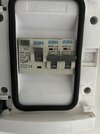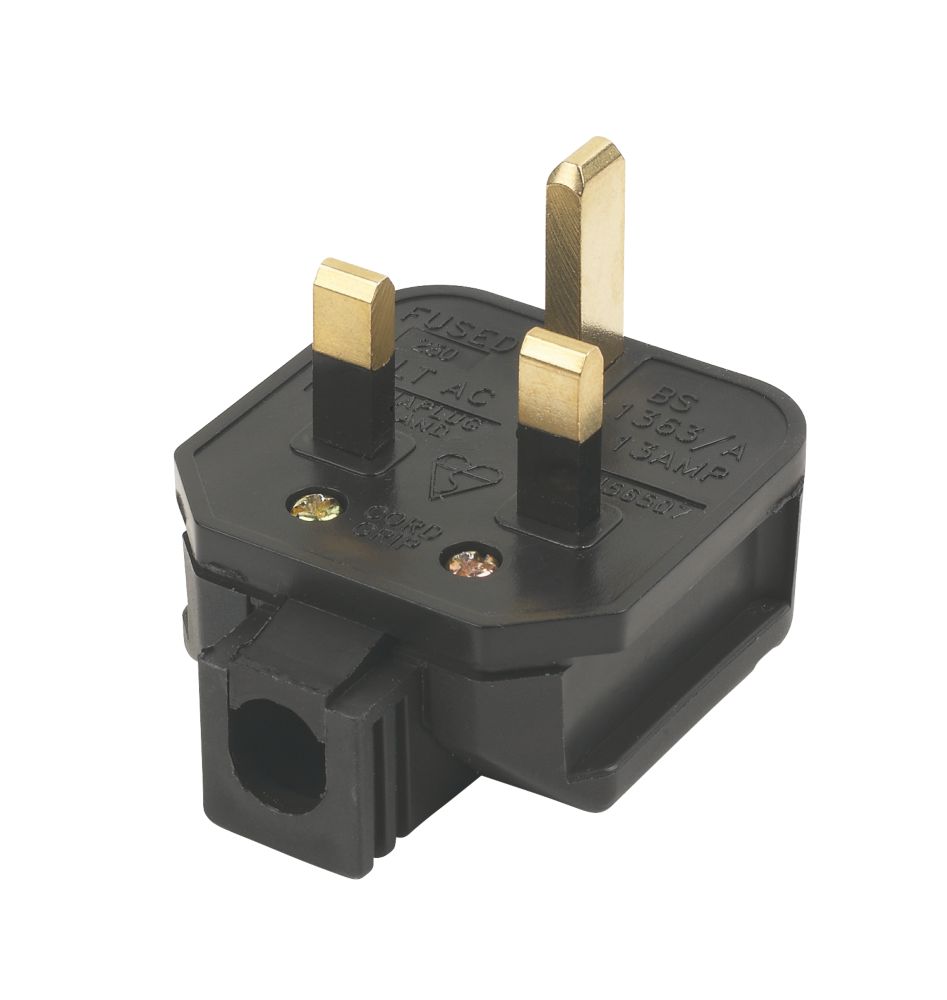- Joined
- 18 Nov 2003
- Messages
- 111
- Reaction score
- 6
- Country

Hope someone can shed some light on this please.
My daughter runs a dog grooming van and has an issue with a 13 amp 'heavy duty' 3 pin plug getting hot and sometimes blowing the fuse.
This tends to happen when she is using a dog drier which has a rating of 2400 watts.
The van has the circuit breakers in attached pic, then the 16 amp plug and lead is plugged into the socket outside the van, this terminates with a 13 amp 'heavy duty 3 pin plug which is plugged into the customers home, it is this plug that overheats andblows the fuse occasionally.
I opened the plug and inside I could see obvious burning at the live connection, I rewired a new plug ensuring that terminations and 13 amp fuse were secure. I told my daughter to ensure that nothing else is being used to draw current while using the drier and after a while the same thing has happened.
The drier is now not being used until we can find a solution; from what I've been able to find out, the 13 amp plug should be able to handle a current draw of 2400w, is it possible that the length of continuous time that the drier is on would cause this?
Any advice or ideas on how to overcome this would be appreciated.
My daughter runs a dog grooming van and has an issue with a 13 amp 'heavy duty' 3 pin plug getting hot and sometimes blowing the fuse.
This tends to happen when she is using a dog drier which has a rating of 2400 watts.
The van has the circuit breakers in attached pic, then the 16 amp plug and lead is plugged into the socket outside the van, this terminates with a 13 amp 'heavy duty 3 pin plug which is plugged into the customers home, it is this plug that overheats andblows the fuse occasionally.
I opened the plug and inside I could see obvious burning at the live connection, I rewired a new plug ensuring that terminations and 13 amp fuse were secure. I told my daughter to ensure that nothing else is being used to draw current while using the drier and after a while the same thing has happened.
The drier is now not being used until we can find a solution; from what I've been able to find out, the 13 amp plug should be able to handle a current draw of 2400w, is it possible that the length of continuous time that the drier is on would cause this?
Any advice or ideas on how to overcome this would be appreciated.


